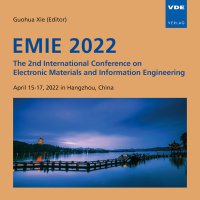Influence of Different Recursive Least Square Algorithms on Online Parameter Identification of Li-ion Batteries
Conference: EMIE 2022 - The 2nd International Conference on Electronic Materials and Information Engineering
04/15/2022 - 04/17/2022 at Hangzhou, China
Proceedings: EMIE 2022
Pages: 4Language: englishTyp: PDF
Authors:
Xie, Zhenjie; Lin, Qiongbin (College of Electrical Engineering and Automation, Fuzhou University, Fuzhou, Fujian, China)
Zhan, Yin; Chen, Feihong (Grid branch, Power China Fujian Electric Power Engineering Co., LTD., Fuzhou, Fujian, China)
Abstract:
The accuracy of the lithium battery equivalent circuit model is of great significance to the management of lithium-ion batteries. Second-order Thevenin equivalent circuits is a commonly used for lithium-ion battery equivalent circuits due to the accuracy and computational effort taken into account. The parameters of the equivalent circuit model are influenced by various factors and their values will change with time during operation. Therefore, the recursive least square (RLS) method is used to identify the model parameters to obtain the time-varying parameters. However, the RLS algorithm suffers from "data saturation phenomenon", so this paper combines the RLS algorithm with rectangular window and exponential window, and adds the damping term to the RLS algorithm. It is experimentally verified that the RLS algorithm combining rectangular and exponential windows can improve the identification accuracy of equivalent circuit parameters.


